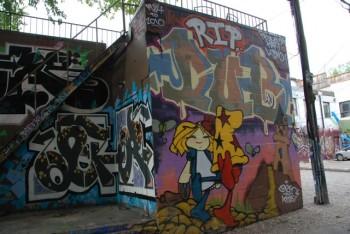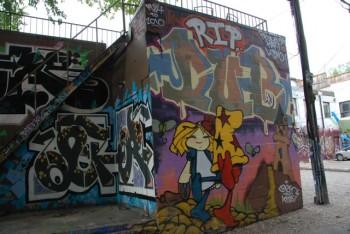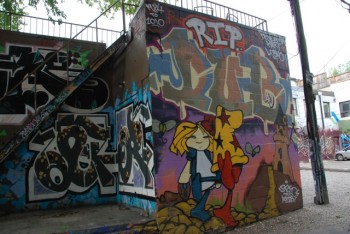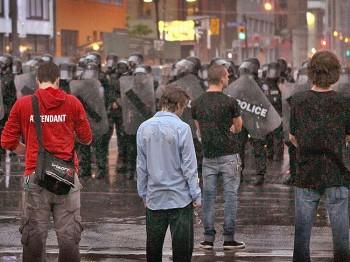Graffiti Needs a Playground
“Graffiti Alley” isn’t a classy art gallery.

A colourful display of graffiti on a wall in a downtown Toronto alley. The city's new graffiti management plan calls for enforcement against illegal graffiti while providing more support for graffiti as art. Snow Mei/ The Epoch Times
|Updated:



